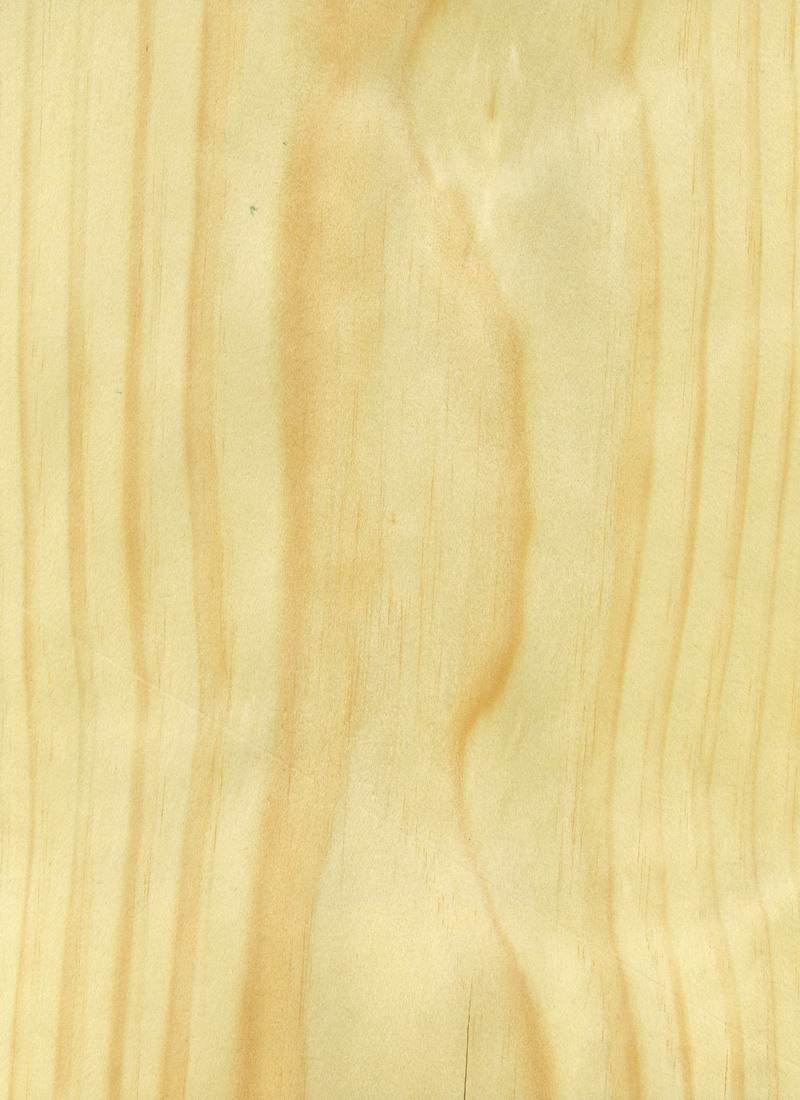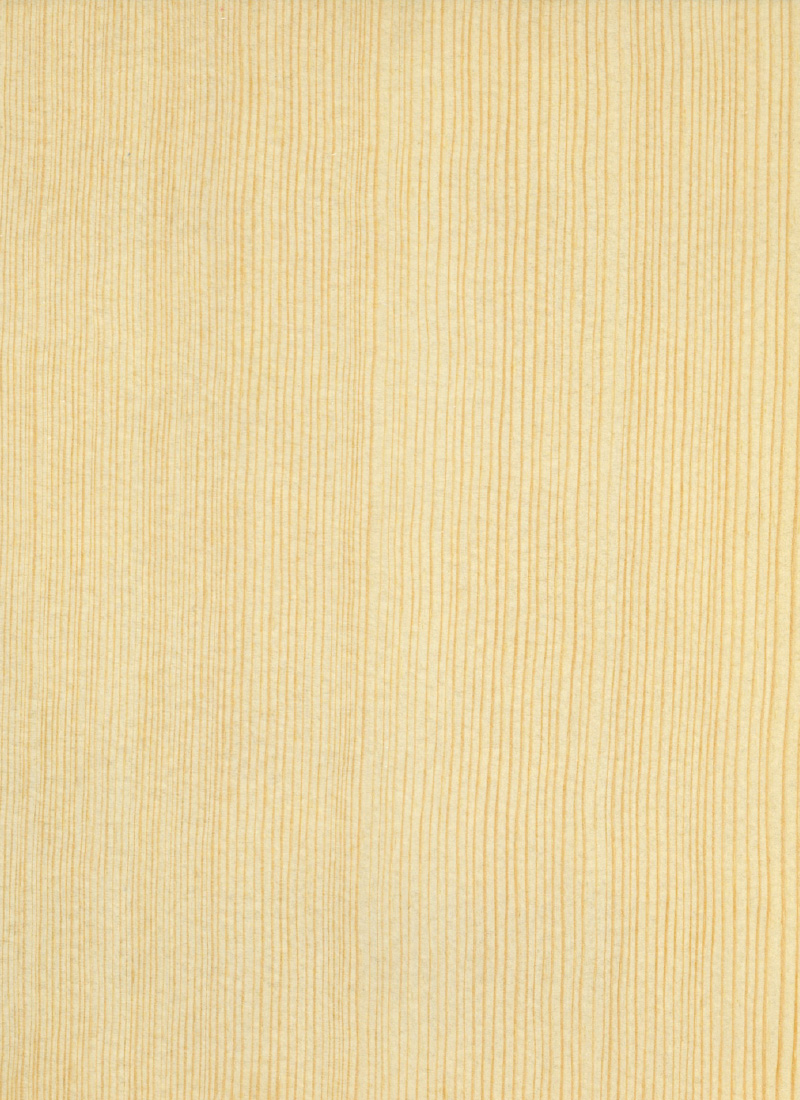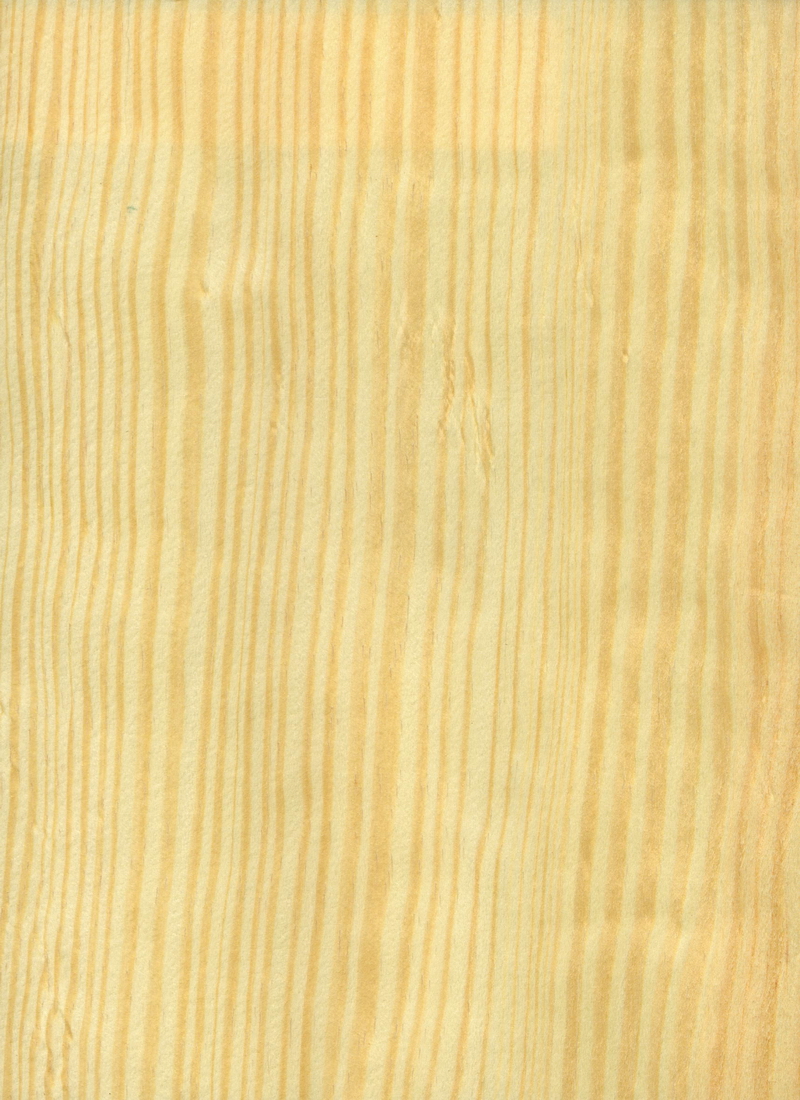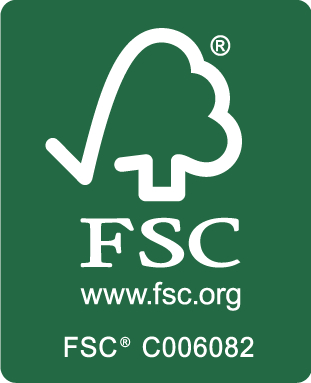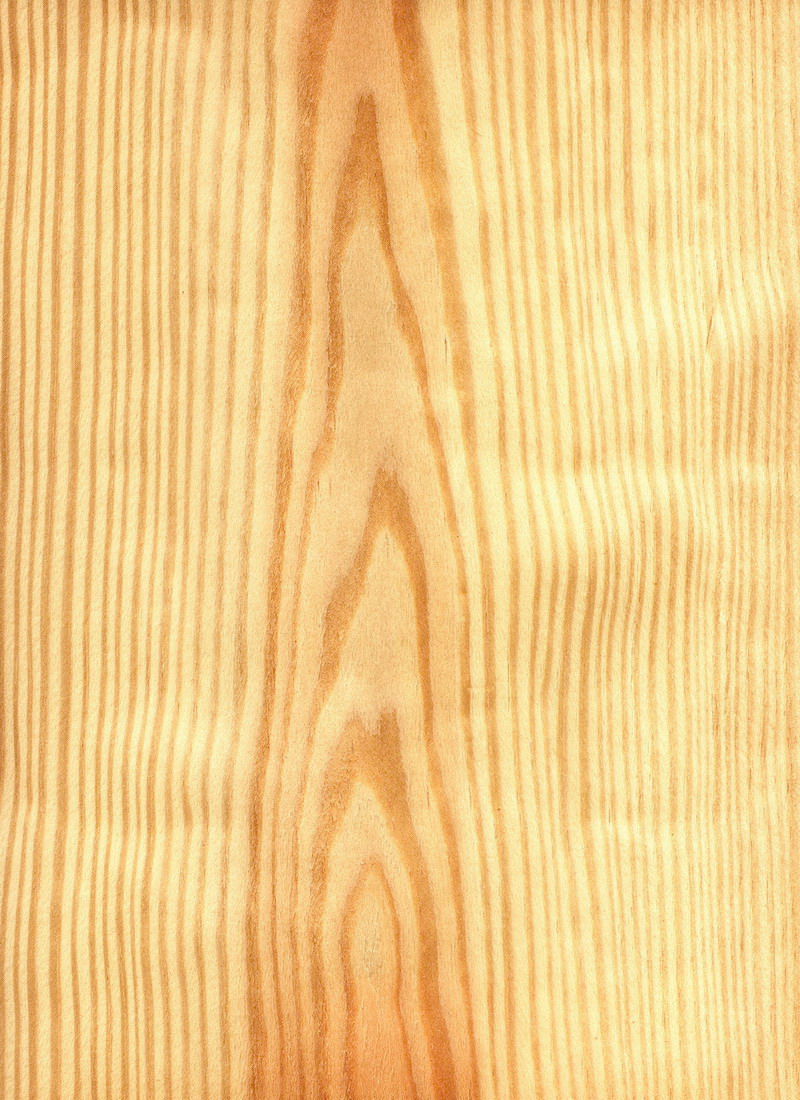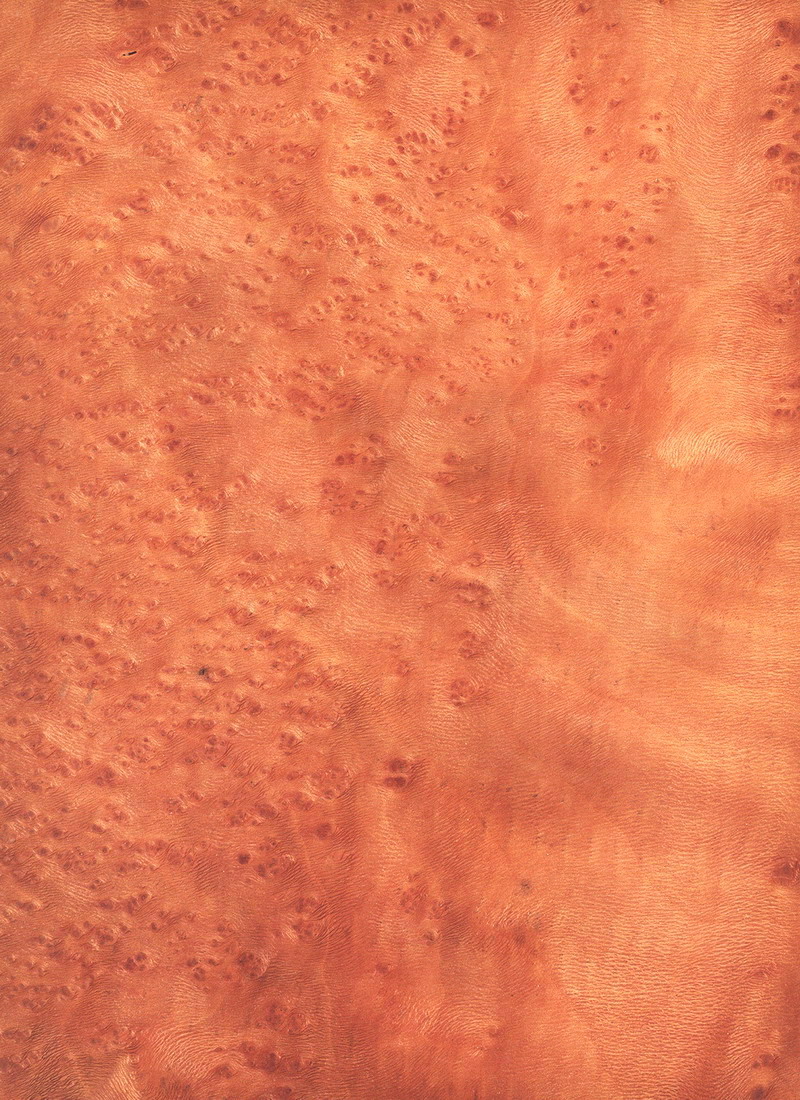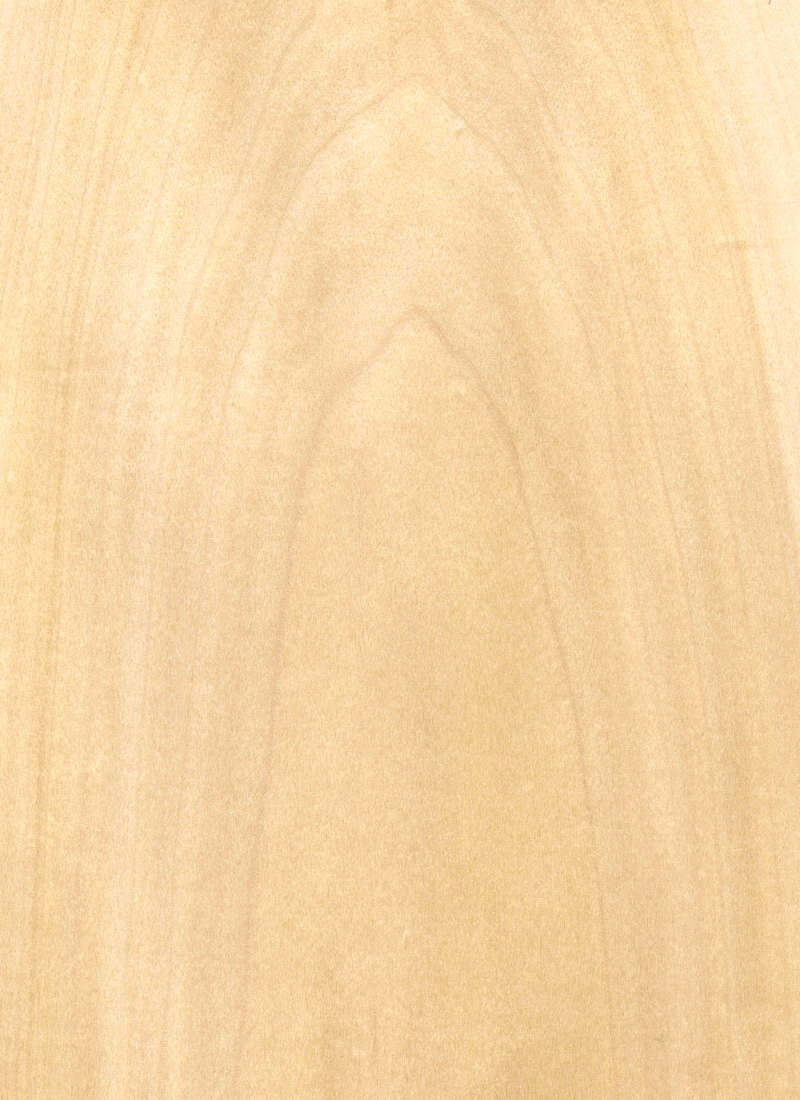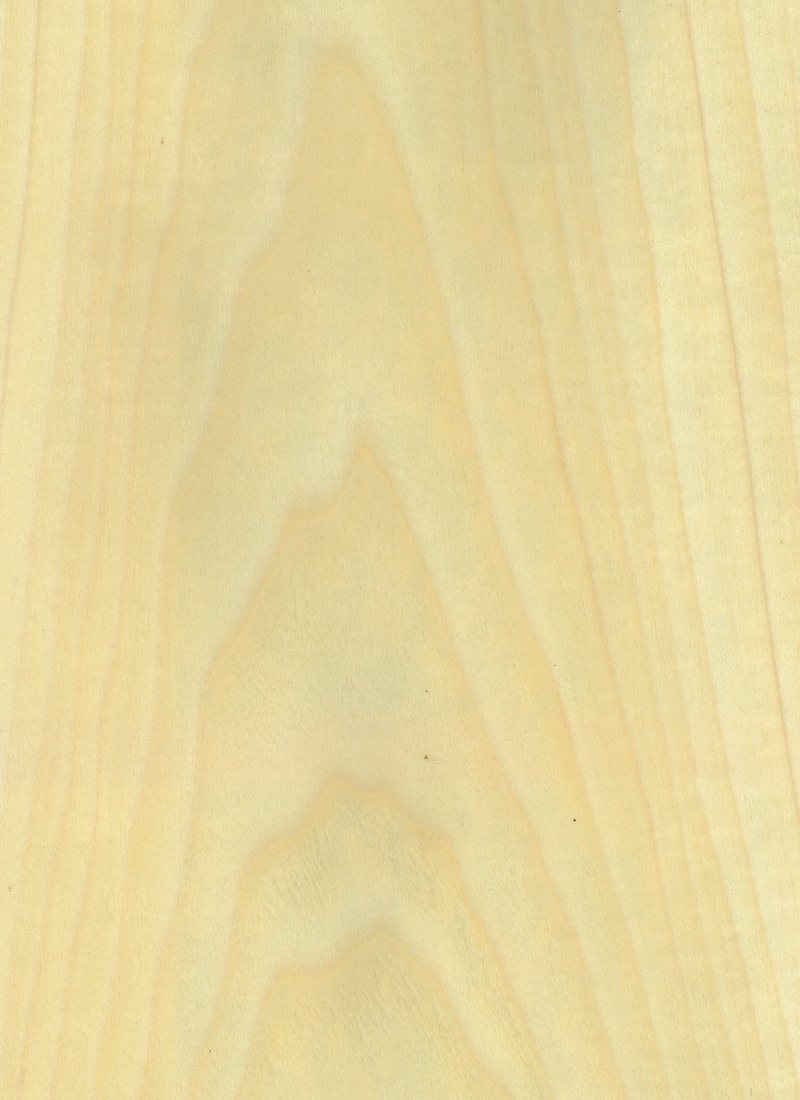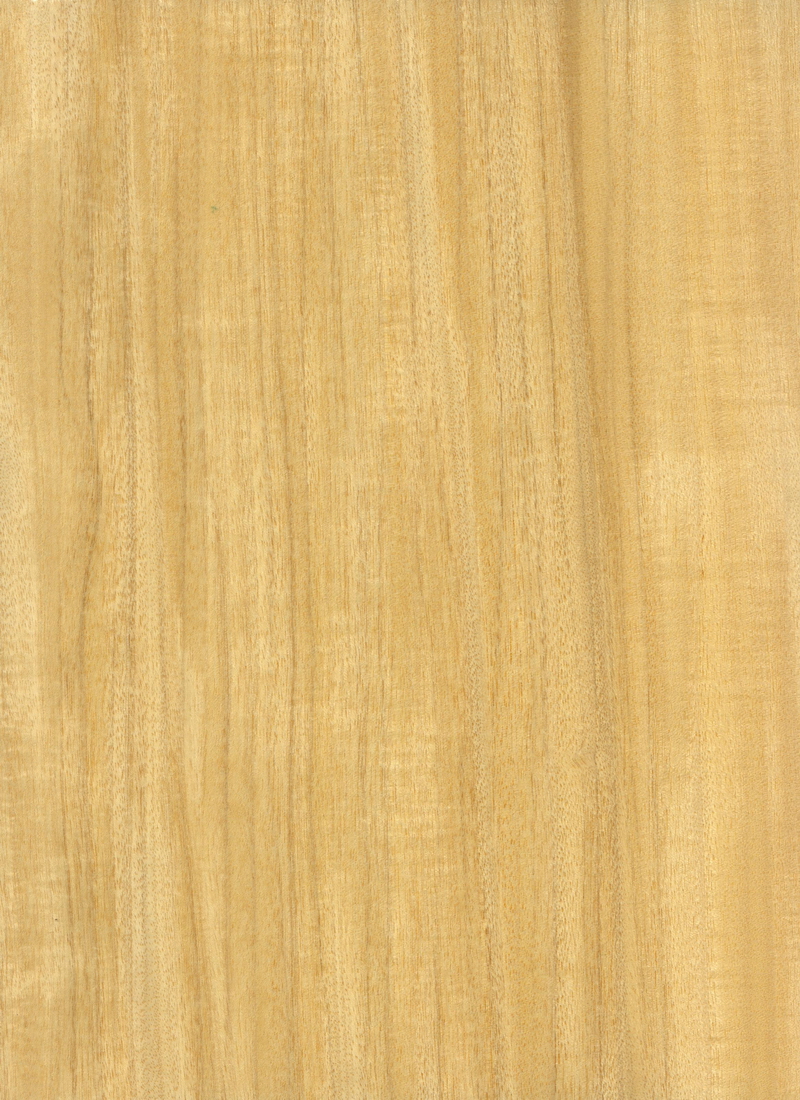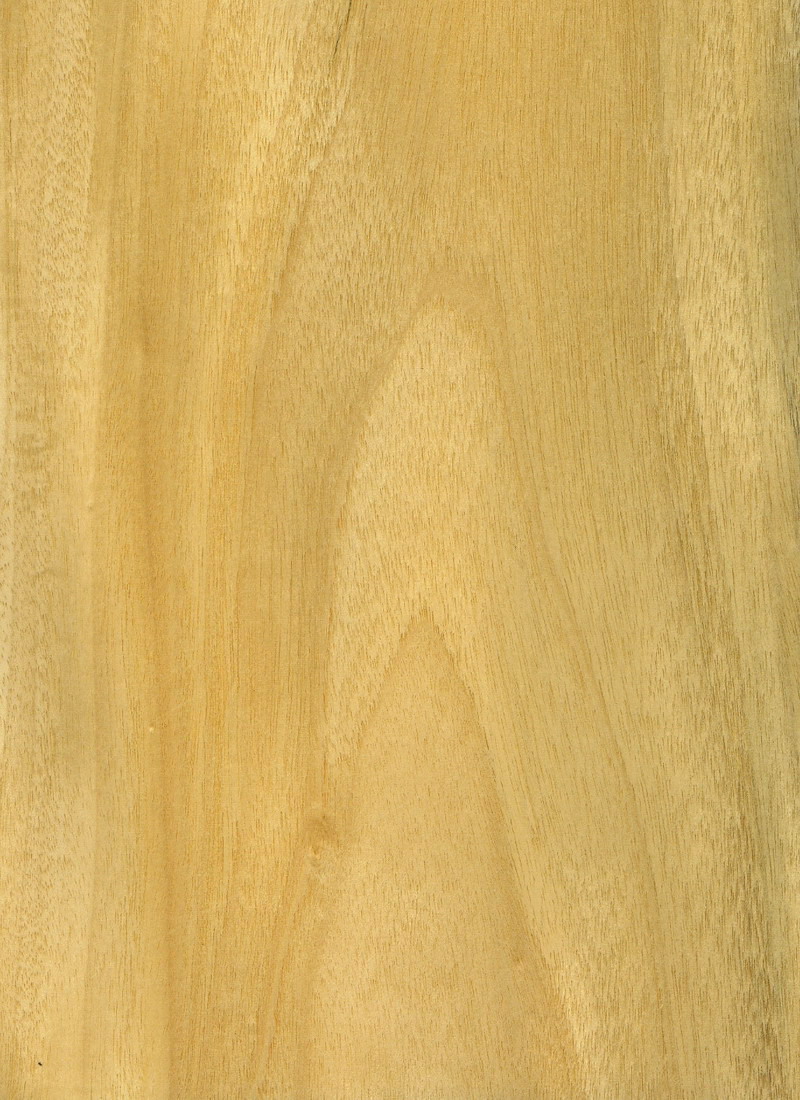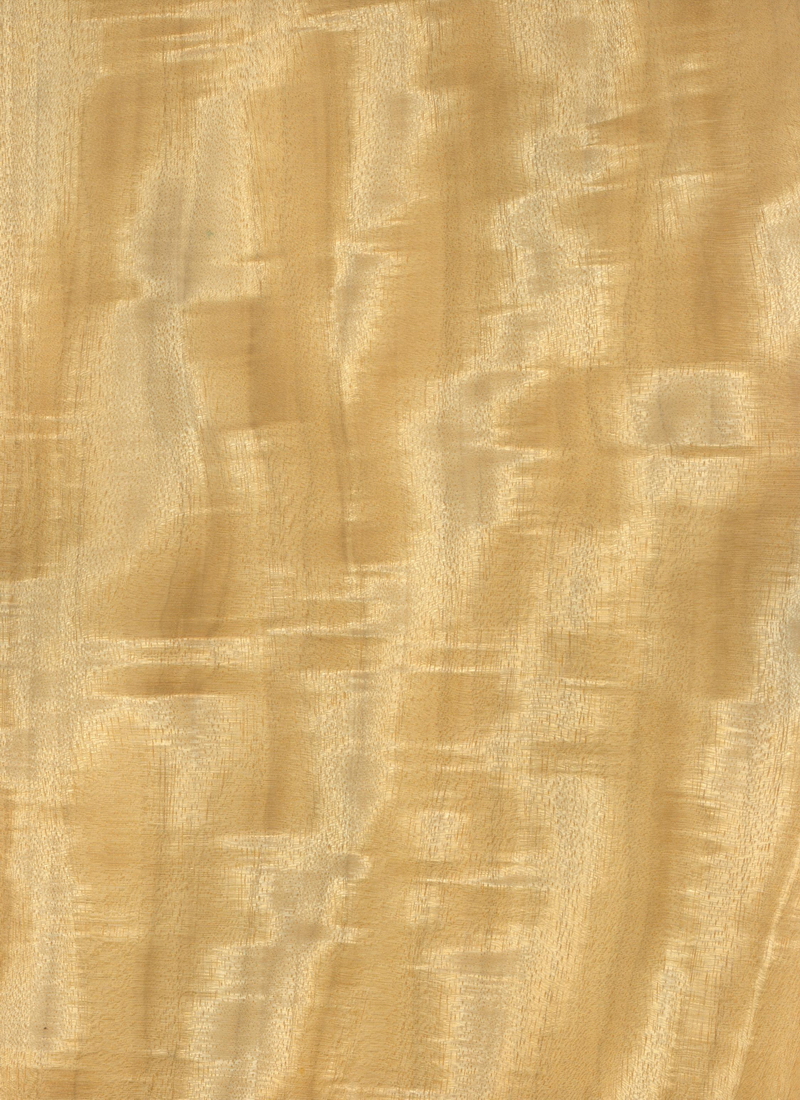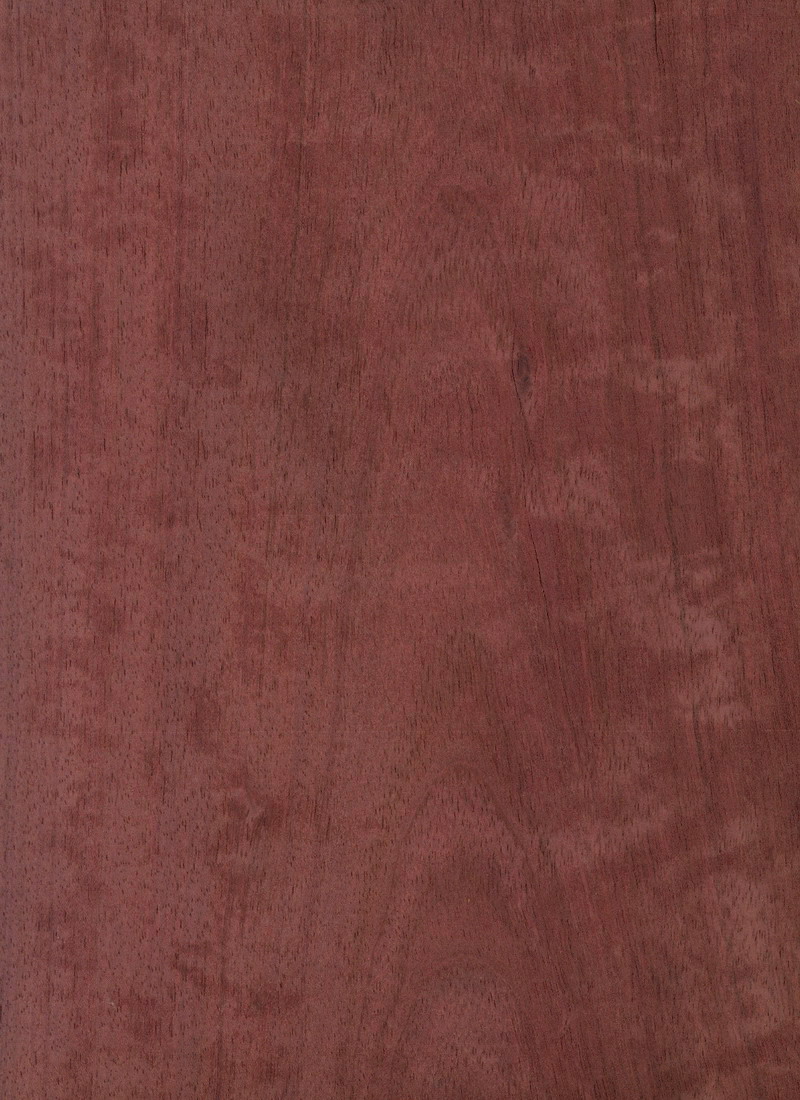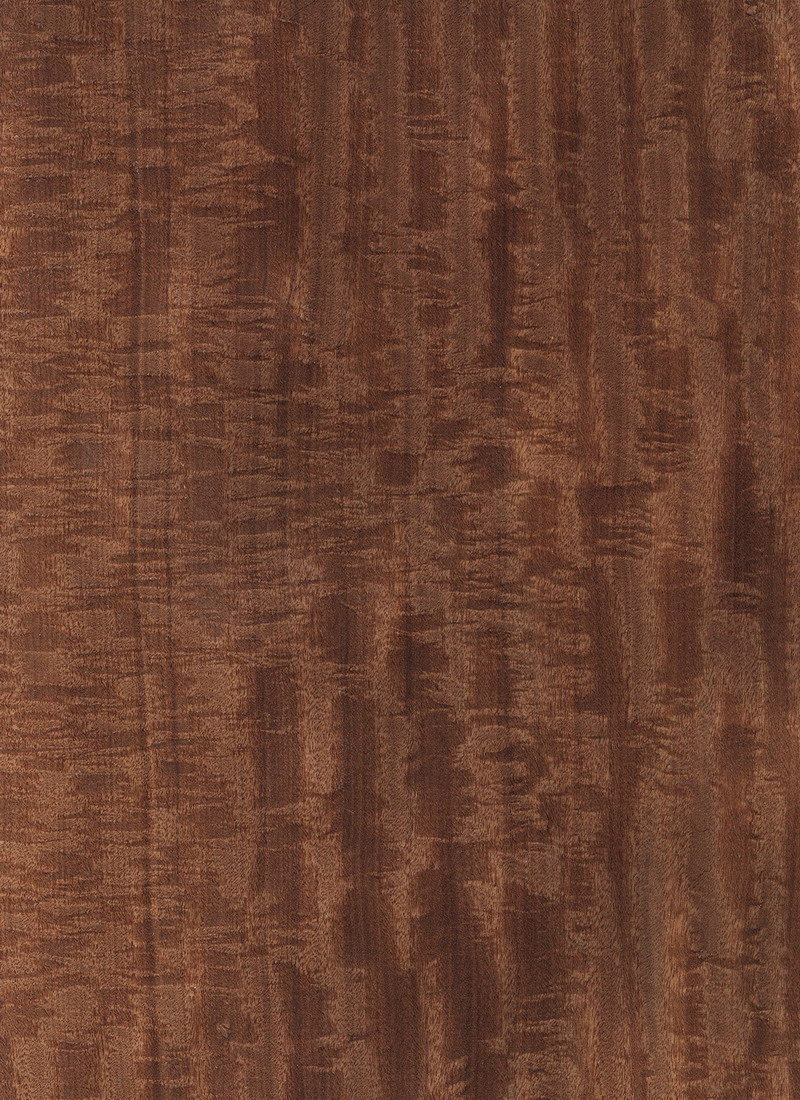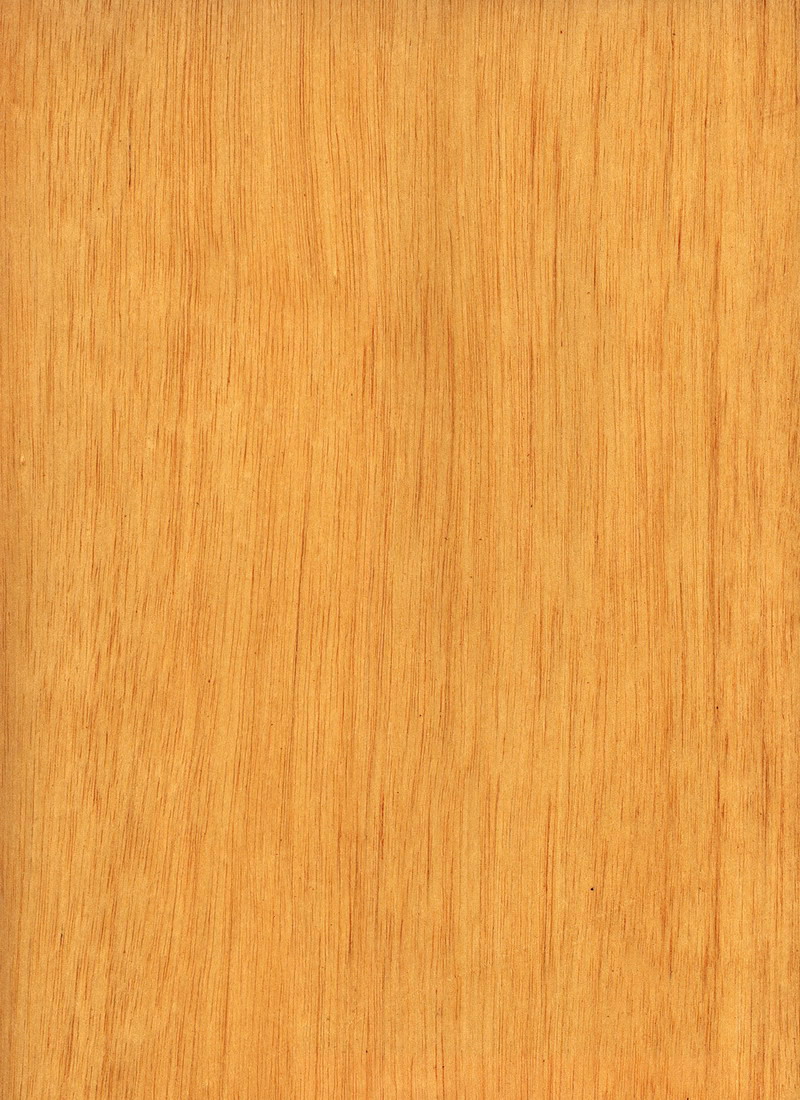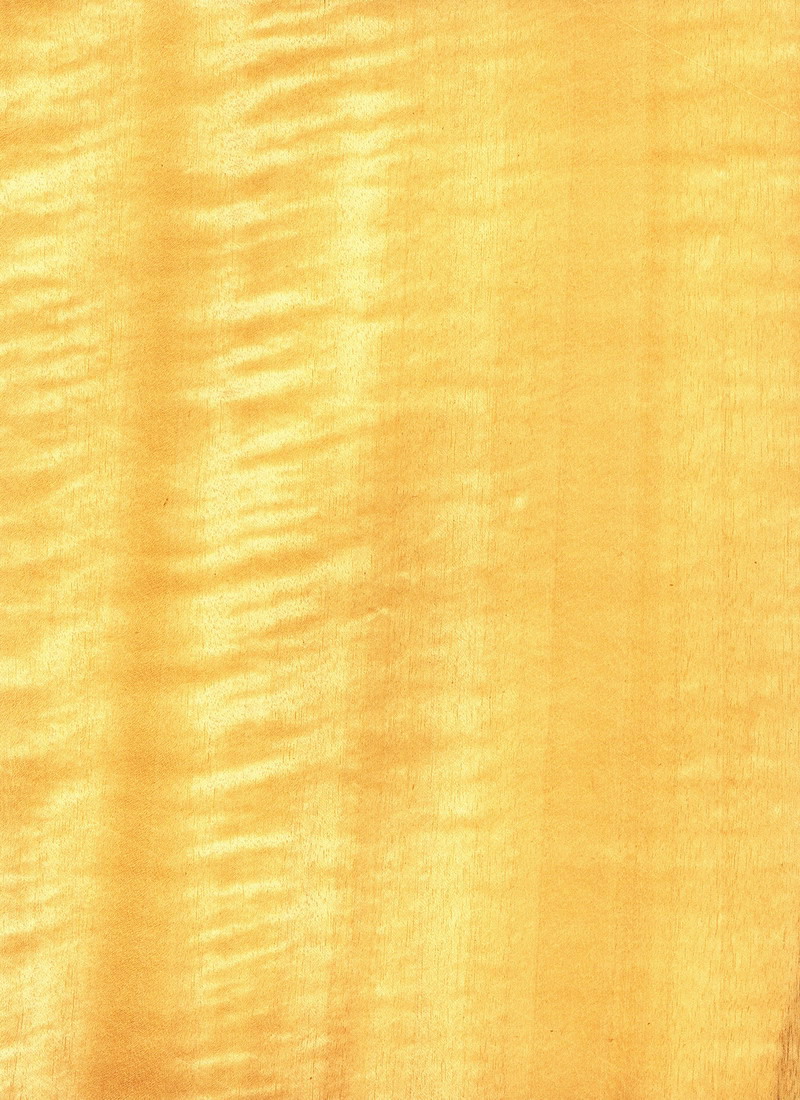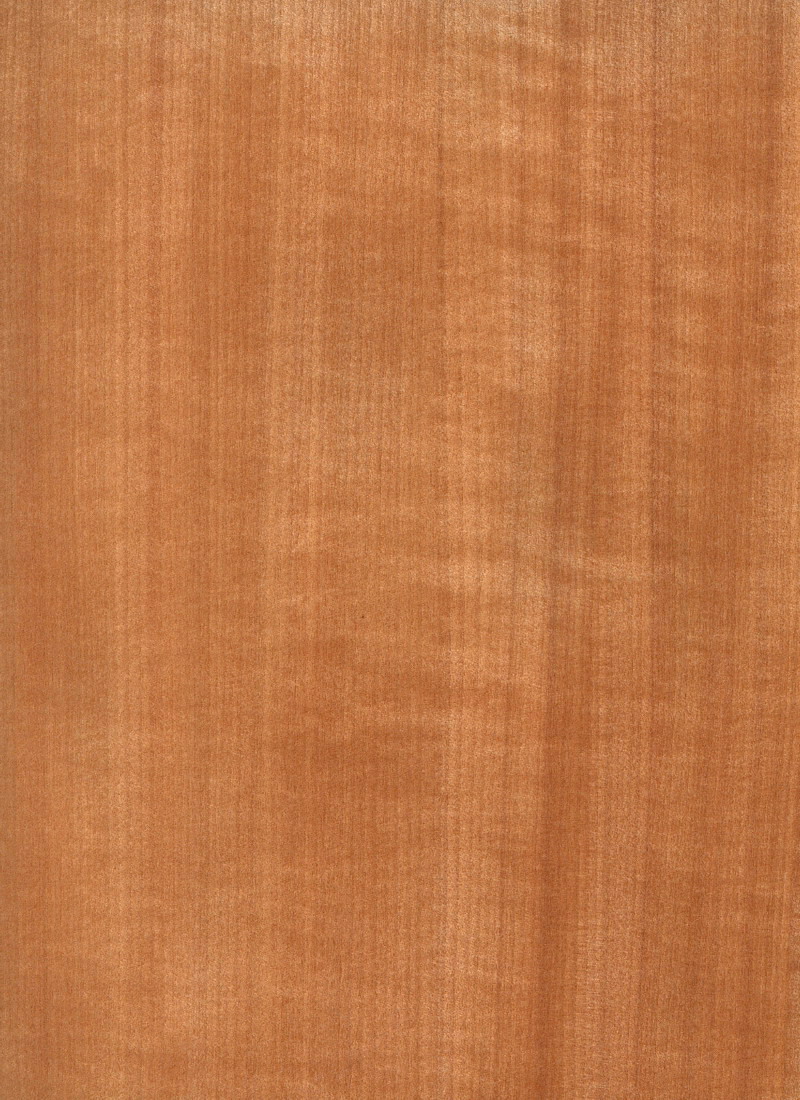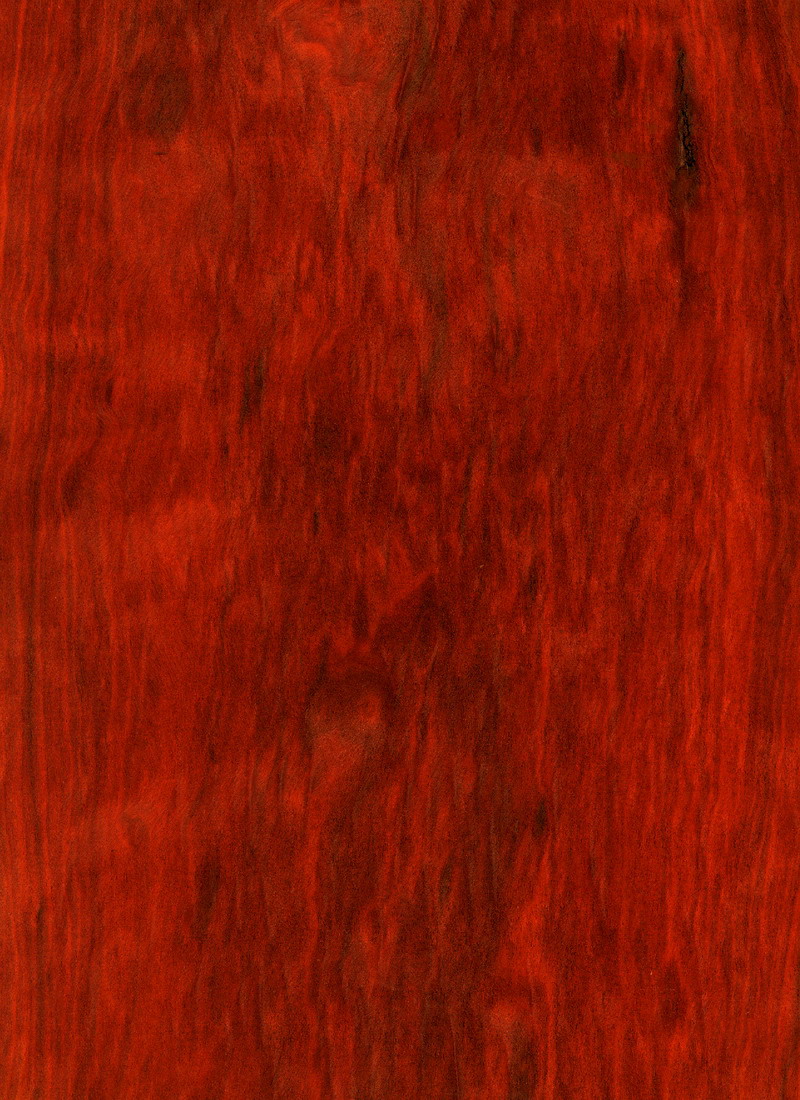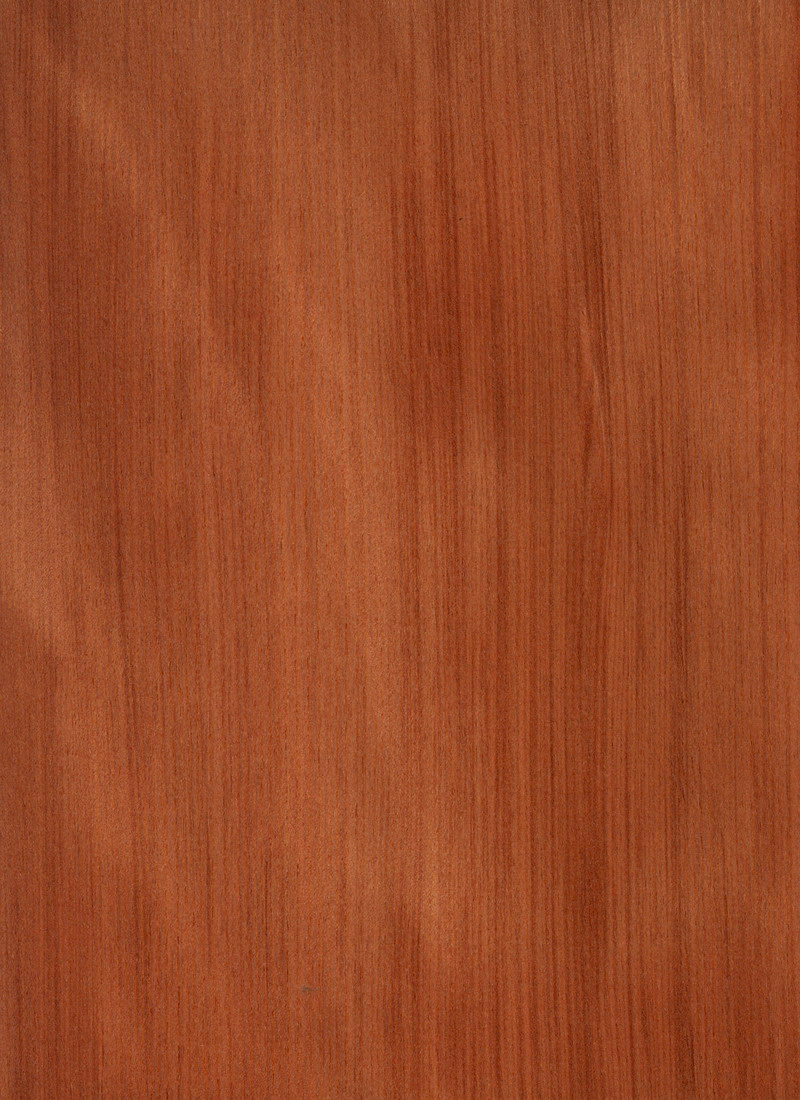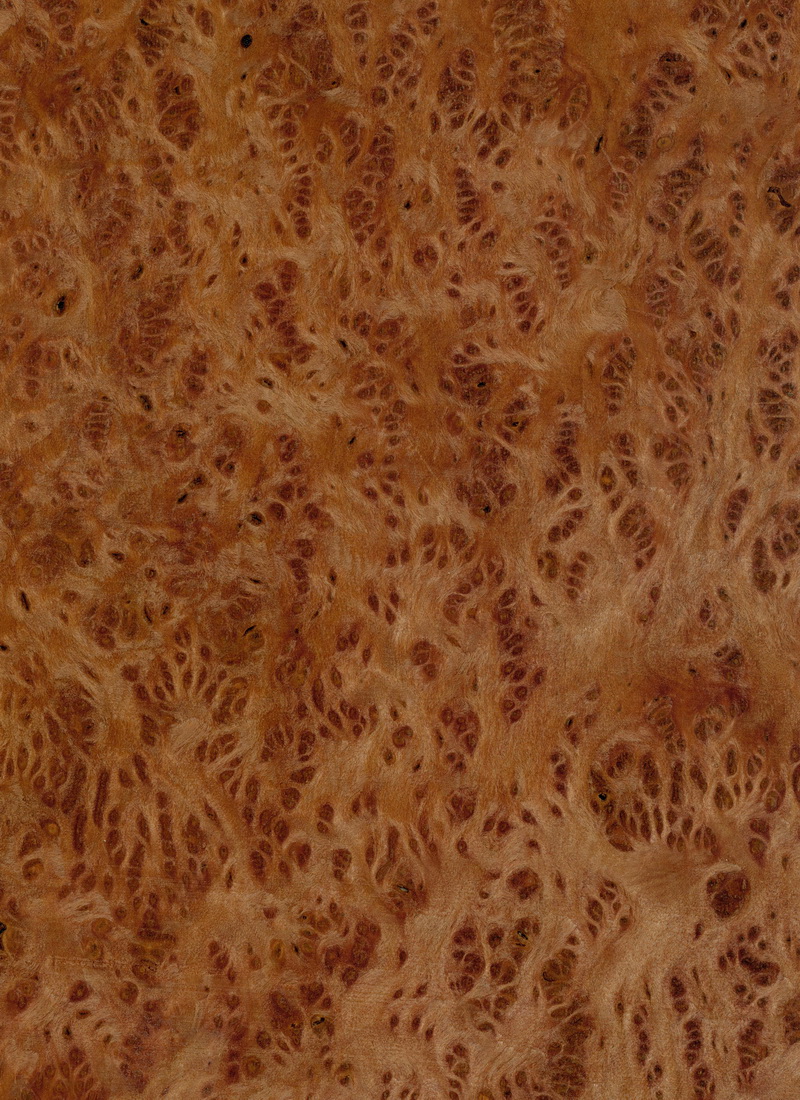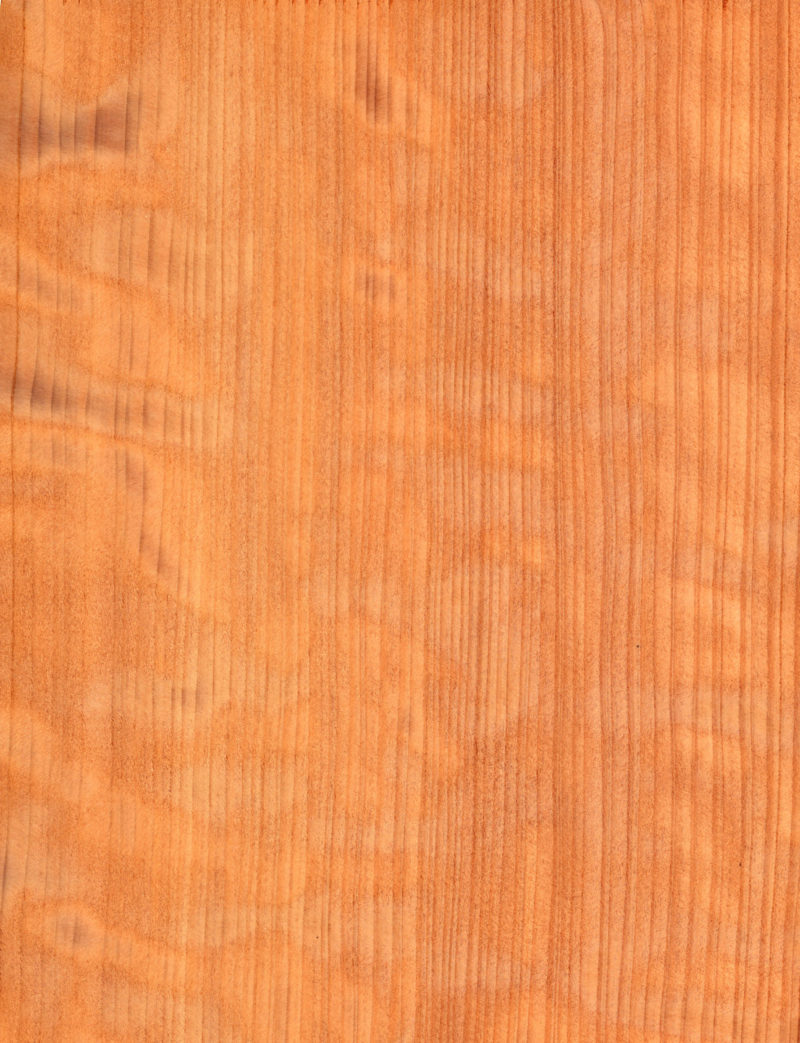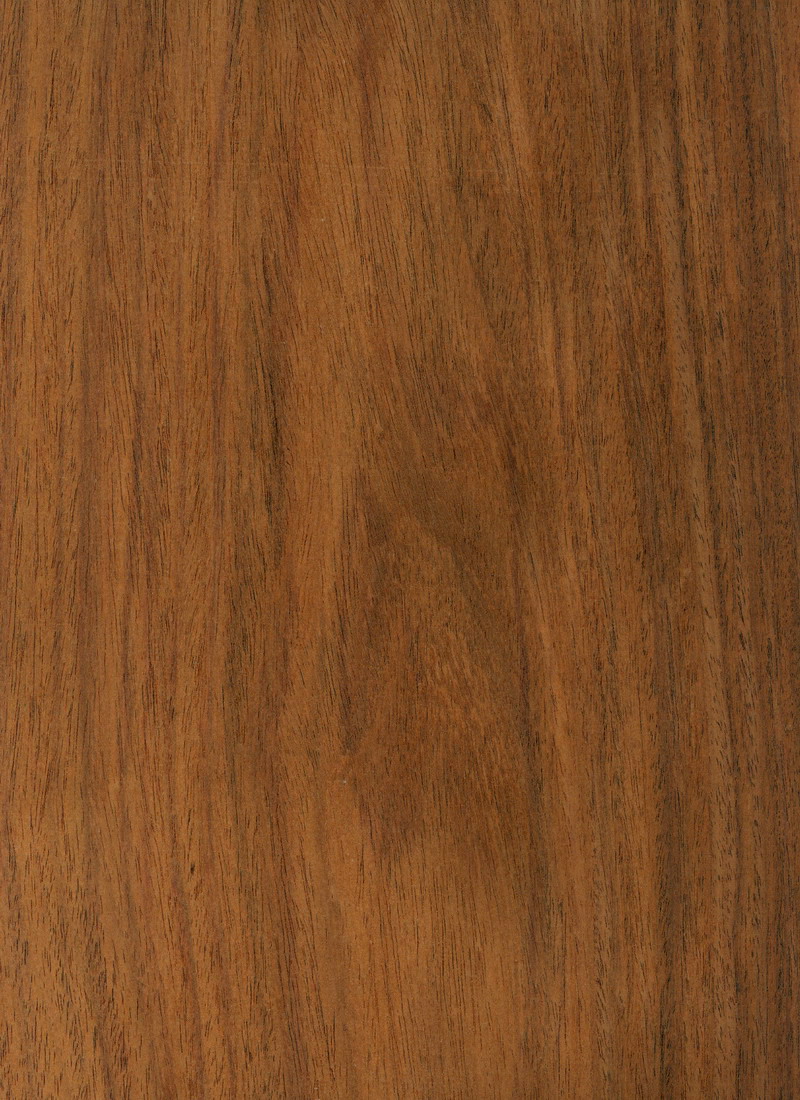Veneer Catalogue
-
 PINE RADIATAx
PINE RADIATAxPINE RADIATA
pinus radiataRadiata Pine flat cut wood veneer has a wide ring of pale-colored sapwood. Heartwood is smaller, light brown to pinkish-brown portion. Also medium, even texture.
Common Uses for Flat Cut Radiata Pine Wood Veneer: Architectural panels, cabinetry, and furniture, as well as millwork.
The Tree: Regularly reaches a height of 80-100 feet, with trunk diameters between 2-3 feet. Long straight cylindrical trunk.
A Little History: Valued for its fast growth and utility as both a source of construction lumber as well as wood pulp in the paper industry.
Region: North America
[widget id="black-studio-tinymce-5"] -
 PINE SCANDINAVIANx
PINE SCANDINAVIANxPINE SCANDINAVIAN
pinus sylvestrisScandinavian Pine quarter cut wood veneer heartwood is pale red to pink with yellow to orange with reddish brown and brown tinges. Sapwood is white to yellow, well defined. Grain is straight with growth ring figure.
Common Uses for Quarter Cut Scandinavian Pine Wood Veneer: Panels, cabinetry, flooring and furniture, as well as millwork.
The Tree: Can grow from 110-150 feet with trunk diameters around 3-6 feet.
A Little History: Before the 18th century, the species was more often known as “Scots fir” or “Scotch fir”. Another, less common, name is European redwood.
Region: Europe
[widget id="black-studio-tinymce-5"] -
 PINE SUGARx
PINE SUGARxPINE SUGAR
Pinus lambertianaSugar Pine quarter cut wood veneer heartwood is a light brown, sometimes with a slightly reddish hue. Sapwood is a pale yellow to nearly white.
Common Uses for Quarter Cut Sugar Pine Wood Veneer: Panels, cabinetry, furniture and millwork.
The Tree: Native to California and Oregon. Can grow to diameters of 10 plus feet and heights well over 200 feet.
Region: North America
[widget id="black-studio-tinymce-5"] -

 PINE YELLOWx
PINE YELLOWxPINE YELLOW
pinus echinataYellow Pine quarter cut wood veneer has yellowish-white sapwood. Heartwood is a small, reddish brown portion. Yellow Pine wood has fast growth patterns, contrasty growth rings. Also coarsely textured.
Common Uses for Quarter Cut Yellow Pine Wood Veneer: Panels, cabinetry, flooring, furniture and millwork.
The Tree: Can grow from 50 to over 100 feet tall with trunk diameters around 2 feet.
Region: North America
[widget id="black-studio-tinymce-5"]
-

 PINE YELLOWx
PINE YELLOWxPINE YELLOW
pinus echinataYellow Pine flat cut wood veneer has yellowish-white sapwood. Heartwood is a small, reddish brown portion. Yellow Pine wood has fast growth patterns, contrasty growth rings. Also coarsely textured.
Common Uses for Flat Cut Yellow Pine Wood Veneer: Panels, cabinetry, flooring, furniture and millwork.
The Tree: Can grow from 50 to over 100 feet tall with trunk diameters around 2 feet.
Region: North America
[widget id="black-studio-tinymce-5"]
-
 PLANETREE BURLx
PLANETREE BURLxPLANETREE BURL
platanus spp.Planetree burl wood veneer sapwood is nearly white. Light pinkish brown to dark reddish brown heartwood, with fine, close grain.
Common Uses for Planetree Burl Wood Veneer: Architectural panels, high end cabinetry, furniture and millwork. Also private aircraft and yacht interiors.
Region: North America
[widget id="black-studio-tinymce-5"] -

 POPLARx
POPLARxPOPLAR
populus balsamiferaPoplar flat cut wood veneer is pure white to very light yellow, or gray. Grain not distinct, sometimes brown streaked; sometimes attractive crotches and swirls.
Common Uses for Flat Cut Poplar Wood Veneer: Architectural panels, cabinetry, doors and furniture, as well as millwork.
Region: North America
[widget id="black-studio-tinymce-5"]
-

 POPLAR WHITEx
POPLAR WHITExPOPLAR WHITE
liriodendron tulipiferaWhite Poplar flat cut wood veneer can be pure white to whitish-green, or gray. Grain can vary from mild to distinct pattern.
Common Uses for Flat Cut White Poplar Wood Veneer: Architectural panels, cabinetry, doors and furniture, as well as millwork.
Region: North America
[widget id="black-studio-tinymce-5"]
-
 PRIMA VERAx
PRIMA VERAxPRIMA VERA
tabebuia donnell-smithiiPrima Vera quarter cut wood veneer heartwood is usually light rose-yellow with streaks of red, orange and brown. Straight to interlocked grain, also wavy. Medium to coarse texture.
Common Uses for Quarter Cut Prima Vera Wood Veneer: Architectural panels, cabinetry and furniture, as well as millwork.
Other Name(s): Also written as Primavera.
The Tree: Reaches heights of 70-100 feet, with trunks growing to widths of 2-3 feet.
Region: South America
[widget id="black-studio-tinymce-5"] -
 PRIMA VERAx
PRIMA VERAxPRIMA VERA
tabebuia donnell-smithiiPrima Vera flat cut wood veneer heartwood is usually light rose-yellow with streaks of red, orange and brown. Straight to interlocked grain, also wavy. Medium to coarse texture.
Common Uses for Flat Cut Prima Vera Wood Veneer: Architectural panels, cabinetry and furniture, as well as millwork.
Other Name(s): Also written as Primavera.
The Tree: Reaches heights of 70-100 feet, with trunks growing to widths of 2-3 feet.
Region: South America
[widget id="black-studio-tinymce-5"] -
 PRIMA VERA FIGURED (BLOCK MOTTLE)x
PRIMA VERA FIGURED (BLOCK MOTTLE)xPRIMA VERA FIGURED (BLOCK MOTTLE)
tabebuia donnell-smithiiFigured Prima Vera quarter cut wood veneer heartwood is usually light rose-yellow with streaks of red, orange and brown. Straight to interlocked grain, also wavy. Medium to coarse texture. Beautiful block mottle figure.
Common Uses for Quarter Cut Prima Vera Wood Veneer: Architectural panels, high end cabinetry and furniture, as well as millwork.
Other Name(s): Also written as Primavera.
The Tree: Reaches heights of 70-100 feet, with trunks growing to widths of 2-3 feet.
Region: South America
[widget id="black-studio-tinymce-5"] -
 PURPLE HEARTx
PURPLE HEARTxPURPLE HEART
peltogyne spp.Purple Heart flat cut wood veneer heartwood is deep purple-violet, maturing to dark brown. Straight grained to wavy; fine texture.
Common Uses for Flat Cut Purple Heart Wood Veneer: Panels, cabinetry, furniture and millwork, as well as specialty applications.
Other Name(s): Amaranth, in addition to Violetwood.
The Tree: Regularly reaches a height of 100-120 feet.
A Little History: Purple Heart veneer is tremendously popular for furniture and other designs calling for a unique splash of color. When freshly cut, the heartwood of Purple Heart appears purple brown. Upon exposure the wood becomes a deep eggplant purple. With further age and exposure to UV light, the wood becomes dark brown with hints of purple. This shift in color can be slowed and minimized by using a UV inhibiting finish on the wood.
Region: South America
[widget id="black-studio-tinymce-5"] -
 QUINAx
QUINAxQUINA
myroxylon peruiferumQuina quarter cut wood veneer heartwood is red brown, sometimes purple pink. White to yellow, well defined sapwood. Block mottle figure is present.
Common Uses for Quarter Cut Quina Wood Veneer: Panels, high end cabinetry and furniture, as well as millwork. Also private aircraft and yacht interiors.
The Tree: Regularly reaches heights of 65-100 feet, with trunk diameters between 2-3 feet.
A Little History: Quina comprises a special genus of trees commonly referred to Balsamo.
Region: South America
[widget id="black-studio-tinymce-5"] -
 RAMINx
RAMINxRAMIN
gonystylus macrophyllumRamin quarter cut wood veneer heartwood is a uniform pale, straw color. Straight to interlocked grain, with fine to moderate texture.
Common Uses for Quarter Cut Ramin Wood Veneer: Architectural panels, cabinetry, furniture and millwork.
The Tree: Grows to heights of 70-100 feet, trunks between 2-3 feet wide. Straight boles yield clear logs up to 60 feet long.
Region: Asia
[widget id="black-studio-tinymce-5"] -
 RAMON BLANCOx
RAMON BLANCOxRAMON BLANCO
brosimum alicastrumRamon Blanco quarter cut wood veneer heartwood is yellow brown to yellow orange. Well defined sapwood, white to yellow in color. Straight and fine grain, also block mottle figure.
Common Uses for Ramon Blanco Wood Veneer: Architectural panels, cabinetry, millwork, furniture and more.
The Tree: Reaches heights of more than 120 feet, with trunk diameters typically between 3-5 feet.
A Little History: Its wood is important in a variety of local uses, such as in interior carpentry and construction, and simple furniture.
Region: South America
[widget id="black-studio-tinymce-5"] -
 RAULIx
RAULIxRAULI
nothofagus proceraRauli quarter cut wood veneer heartwood is generally red. There are some browns, oranges and sometimes green tones as well. Usually straight grain, even with weak figure.
Common Uses: Architectural panels, cabinetry and doors, as well as both furniture and millwork.
The Tree: Rauli is a hardwood from Chile that typically reaches 130 feet in height. Trunk diameters are usually only between 2 to 3 feet. However, Rauli can sometimes have a trunk diameter between 6 to 8 feet.
Region: South America
[widget id="black-studio-tinymce-5"] -
 REDHEARTx
REDHEARTxREDHEART
Erythroxylum spp.Redheart flat cut is a moderately rare wood veneer. Red-toned, ranging from lighter and brilliant reds to deeper tones. Figured grain, straight and interlocked with fine texture. Stripe figure, some waves and some mottling.
Common Uses for Redheart Flat Cut Wood Veneer: Architectural millwork, fine furniture, cabinetry and doors, as well as private aircraft and yacht interiors.
The Tree: Redheart generally reaches heights of 50-65 feet with trunk diameters between only 1 to 2 feet.
Region: South America
[widget id="black-studio-tinymce-5"] -

 REDWOODx
REDWOODxREDWOOD
sequoia sempervirensRedwood quarter cut wood veneer sapwood is nearly white with a heartwood that is light to red to a deep reddish-brown. Redwood quarter cut veneer possesses a straight grain and a coarse texture.
Common Uses: Architectural panels, millwork, fine furniture and cabinetry, as well as yacht and aircraft interiors.
Other Name(s): Coast Redwood, California Redwood.
The Tree: Redwood is the state tree of California. Native range extends southward from southern Oregon for almost 500 miles along the Pacific coast. This species includes the tallest living trees on Earth, reaching up to 379 feet (115.5 m) in height and up to 29.2 feet (8.9 m) in diameter.
A Little History: The oldest known coast redwood is about 2,200 years old; many others in the wild also exceed 600 years.
Region: North America
[widget id="black-studio-tinymce-5"]
-
 REDWOOD BURLx
REDWOOD BURLxREDWOOD BURL
sequoia sempervirensRedwood burl wood veneer is rich, warm and full of character. Burls grow below the soil line on Redwood, usually within 10 feet from the soil surface. Its color ranges from light to deep and dark red browns. Intense figure is often seen in Redwood burl and may take on a lacy or birdseye appearance.
Common Uses: Most notably used in automotive dashboards, Redwood Burl wood veneer is also a perfect choice for aircraft and yacht building, as well as high end furniture.
Other Name(s): Coast Redwood, California Redwood.
The Tree: Redwood is the state tree of California. Native range extends southward from southern Oregon for almost 500 miles along the Pacific coast. This species includes the tallest living trees on Earth, reaching up to 379 feet (115.5 m) in height and up to 29.2 feet (8.9 m) in diameter.
A Little History: The oldest known coast redwood is about 2,200 years old; many others in the wild also exceed 600 years.
Region: North America
[widget id="black-studio-tinymce-5"] -

 REDWOOD FIGUREDx
REDWOOD FIGUREDxREDWOOD FIGURED
sequoia sempervirensFigured Redwood wood veneer sapwood is nearly white with a heartwood that is light to red to a deep reddish-brown. Figured Redwood veneer possesses a straight grain and a coarse texture.
Common Uses for Figured Redwood Wood Veneer: Architectural panels, millwork, fine furniture and cabinetry, as well as yacht and aircraft interiors.
Other Name(s): Coast Redwood, California Redwood.
The Tree: Redwood is the state tree of California. Native range extends southward from southern Oregon for almost 500 miles along the Pacific coast. This species includes the tallest living trees on Earth, reaching up to 379 feet (115.5 m) in height and up to 29.2 feet (8.9 m) in diameter.
A Little History: The oldest known coast redwood is about 2,200 years old; many others in the wild also exceed 600 years.
Region: North America
[widget id="black-studio-tinymce-5"]
-
 ROSEWOOD DE MATOx
ROSEWOOD DE MATOxROSEWOOD DE MATO
ormosia monospermiaRosewood De Mato flat cut wood veneer heartwood is brownish red, with yellowish pink and orange tints. Sapwood is brownish yellow, not easily distinguished from the heartwood. Coarse grain with some luster and figure.
Common Uses for Flat Cut Rosewood De Mato Wood Veneer: Panels, furniture, cabinetry and millwork, as well as private aircraft and yacht interiors.
Region: South America
[widget id="black-studio-tinymce-5"] -
 ROSEWOOD EAST INDIANx
ROSEWOOD EAST INDIANxROSEWOOD EAST INDIAN
dalbergia latifoliaEast Indian Rosewood quarter cut wood veneer heartwood ranges from rose to purplish brown hues. Straight to interlocked grain with a moderately coarse texture. Handsome darker streaks.
Common Uses: Panels, millwork, high end cabinetry and furniture. Musical instruments, as well as private aircraft and yacht interiors are also popular uses.
Other Name(s): Also called Bombay Blackwood.
The Tree: Size varies greatly, from 1 foot to 5 feet in trunk diameters. Reaches heights of 80 feet.
Region: Asia
[widget id="black-studio-tinymce-5"] -
 ROSEWOOD EAST INDIANx
ROSEWOOD EAST INDIANxROSEWOOD EAST INDIAN
dalbergia latifoliaEast Indian Rosewood flat cut wood veneer heartwood ranges from a rose color to a darker purple-brown. Straight to interlocked grain, along with a moderately coarse texture. Also beautiful cathedral pattern.
Common Uses for Flat Cut East Indian Rosewood Wood Veneer: Architectural and acoustic panels, millwork, high end cabinetry and furniture. Musical instruments, as well as both private aircraft and yacht interiors are also popular applications.
Other Name(s): Also called Bombay Blackwood.
The Tree: Size varies greatly, from 1 foot to 5 feet in trunk diameters. Reaches heights of 80 feet.
Region: Asia
[widget id="black-studio-tinymce-5"] -
 ROSEWOOD HONDURASx
ROSEWOOD HONDURASxROSEWOOD HONDURAS
dalbergia stevensoniiHonduras Rosewood flat cut wood veneer heartwood is a brownish-mauve color, but can range from a deep brownish-purple to a light brown. Straight to wavy grain; medium to fine texture. Very handsome appearance.
Common Uses for Flat Cut Honduras Rosewood Wood Veneer: Architectural panels, cabinetry, furniture and millwork, as well as musical instruments.
Other Name(s): Also called Honduran Rosewood.
The Tree: Reaches heights of 50-100 feet with trunk diameters of about 3 feet.
A Little History: Known for its acoustic properties, making it well-suited for acoustic musical instruments.
Region: South America
[widget id="black-studio-tinymce-5"]

